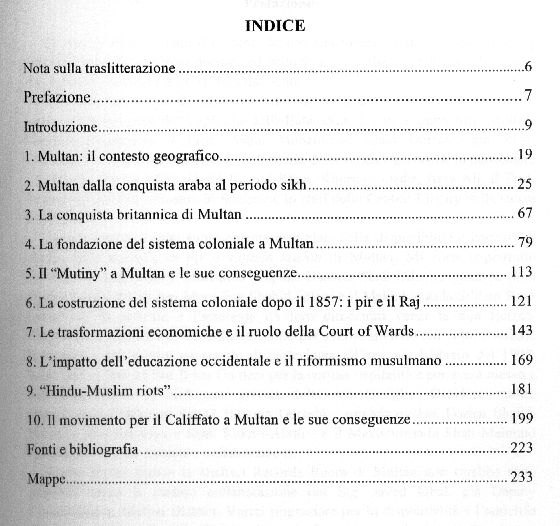Edizioni Università di Trieste
Tools for identifying biodiversity : progress and problems : proceedings of the international congress, Paris, September 20-22, 2010, Muséum national d'histoire naturelle - Grand Amphithéâtre
Publisher
Location
Devising the EDIT Platform for Cybertaxonomy . . 1
Descriptive Data in the EDIT Platform for Cybertaxonomy . . 7
An online authoring and publishing platform for field guides and identification tools . . 13
A search tool for the digital biodiversity resources of KeyToNature . . 19
Developing Web-based Search Portals on Birds for Different Target Groups . . 25
Simple Identification Tools in FishBase . . 31
The Catalogue of Life: towards an integrative taxonomic backbone for biodiversity . . 37
BHL-EUROPE: Biodiversity Heritage Library for Europe . . 43
A Pan-European Species-directories Infrastructure (PESI) . . 49
ViBRANT-Virtual Biodiversity Research and Access Network or Taxonomy . . 53
Identifications in BioPortals™ . . 55
Types of identification keys . . 59
Learning, Identifying, Sharing . . 65
Identification with iterative nearest neighbors using domain knowledge . . 71
A MediaWiki implementation of single-access keys . . 77
Simple matrix keys from Excel spreadsheets . . 83
Wiki keys on mobile devices . . 89
A Wiki-based Key to Garden and Village Birds . . 95
Wiki-keys for the ferns of the Flora of Equatorial Guinea . . 99
MyKey: a server-side software to create customized decision trees . . 107
Xper2: managing descriptive data from their collection to e-monographs . . 113
FRIDA3.0 Multi-authored digital identification keys in the Web . . 115
Flora Bellissima, an expert software to discover botany and identify plants . . 121
Modifiable digital identification keys . . 127
The Open Key Player: A new approach for online interaction and user-tracking in identification keys . . 133
Improvement of identification keys by user-tracking . . 137
ARIES: an expert system>upporting legislative tasks. Identifying animal materials using the Linnaeus II software . . 145
An integrated system for producing user-specific keys on demand: an application to Italian lichens . . 151
"Flora Italiana Digitale": an interactive identification tool for the Flora of Italy . . 157
eFlora and DialGraph, tools for enhancing identification processes in plants . . 163
A catalogue of bird bones: an exercise in semantic web practice . . 171
Anthos.es: 10 years showing Spanish plant diversity information in the Internet . . 177
An interactive tool for the identification of airborne and food fungi . . 183
The Estonian eFlore . . 189
Keys to plants and lichens on smartphones: Estonian examples . . 195
IIKC: An Interactive Identification Key for female Culicodes (Diptera: Ceratopogonidae) from the West Palearctic region . . 201
Indochinese bamboos: biodiversity informatics to assist the identification of "vernacular taxa" . . 207
Identification tools as part of Feedsafety research: the case of ragwort . . 213
Two identification tools applied on Mascarene's corals genera (Xper2) and species (IKBS) . . 217
Interactive, illustrated, plant identification keys: an example for the Portuguese flora . . 219
The ORCHIS software used to identify 100 orchids species of Lao PDR . . 221
A collaborative and distributed identification tool for plants . . 223
Alternative 2D and 3D Form Characterization Approaches to the Automated Identification of Biological Species . . 225
VeSTIS: A Versatile Semi-Automatic Taxon Identification System from Digital Images . . 231
Iterative Search with Local Visual Features for Computer Assisted Plant Identification . . 237
Image data banks and geometric morphometrics . . 243
Outline analysis for identifying Limodorum species from seeds . . 249
Geometric morphometrics as a tool to resolve taxonomic problems: the case of Ophioglossum species (ferns) . . 251
Geometric morphometric analysis as a tool to explore covariation between shape and other quantitative leaf traits in European white oaks . . 257
Landmark based morphometric variation in Common dolphin (Delphinus delphis L.,1758) . . 263
DNA barcoding: theoretical aspects and practical applications . . 269
Strength and Limitations of DNA Barcode under the Multidimensional Species Perspective . . 275
DNA Barcoding and Phylogeny of Patellids from Asturias (Northern Spain) . . 275
Molecular Identification of Italian Mouse-eared Bats (genus Myotis) . . 289
Identifying algal symbionts in lichen symbioses . . 295
Identification of polymorphic species within groups of morphologically conservative taxa: combining morphological ano molecular tecnniques . . 301
Coffee species and varietal identification . . 307
Mislabelling in megrims: implications for conservation . . 315
Seeds in subtribe Ornidinae (Orchidaceae): the best morphological tool to support molecular analyses . . 323
Lentils biodiversity: the characterization of two local landraces . . 327
A model study for tardigrade identification . . 333
DNA Barcoding of Philippine plants . . 341
Molecular and ecophysiological characterisation of the Tunisian bee: Apis mellifera intermissa . . 343
DNA Bank Network - connecting biological collections and sequence databases by long-term DNA storage with online accession . . 35
Mitochondrial DNA sequences for forensic identification of the endangered whale shark, Rhincodon typus (Smith, 1828): A Case study . . 353
An assignment-based e-learning course on the use of KeyToNature e-keys . . 355
User needs for interactive identification tools to organisms employed in the EU-Project KeyToNature . . 361
Teaching biodiversity with online identification tools from KeyToNature: a comparatie study . . 367
Digital Tools in the Botanical Garden of Madrid . . 373
Use of KeyToNature Identification Tools in the Schools of Slovenia . . 379
New key-tools for pollen identification in research and education . . 383
The UK urban tree survey . . 389
Tree School -A new Innovation for Science and Education . . 395
Engaging Schools in Cutting Edge Science: From the Educator's Perspective . . 401
Educational or emotional languages? An interactive experiment with the Lucanian flora (S-ltaly) . . 405
Online sharing educational content on biodiversity topics: a case study from organic agriculture and agroecology . . 411
JSTOR Plant Science . . 417
ecoBalade: Towards a workflow for Citizen Science Nature Trails . . 419
Electronic data recording tools and identifying species in the field . . 421
Cost Assessment of the Field Measurement of Biodiversity: a Farm-scale Case Study . . 423
Markets for biodiversity information products: real or imaginary? . . 429
A Basic Business Model for Commercial Application of Identification Tools . . 437
Keys to Nature: A test on the iPhone market . . 445
AUTHOR INDEX . . 451
La scatola nera : appunti di tossicologia per la valutazione del rischio chimico
Publisher
Location
Prefazione . . 11
INTRODUZIONE: E PRINCIPI GENERALI
Introduzione . . 17
1. I prìncipi generali dell'analisi del rischio chimico . . 22
2. Principi di tossicologia generale . . 28
PARTE I: TOSSICOLOGIA GENERALE
3. Cinetica, le leggi generali . . 37
4. Cinetica, l'assorbimento . . 48
5. Cinetica, la distribuzione . . 61
6. Cinetica, la biotrasformazione . . 67
7. Cinetica, l'eliminazione . . 75
8. La tossicodinamica, dose ed effetto . . 82
9. Tossicodinamica, l'interazione xenobiotico-organismo . . 101
10. Tossicodinamina, tossici con soglia e senza soglia . . 130
PARTE II: IL RISK ASSESSMENT
11. Il processo di definizione del rischio nella pratica lavorativa. L'identificazione dei pericoli . . 153
12. L'identificazione del pericolo e la doserisposta nella pratica del risk Assessment - Le fonti di informazione previste dalle norme . . 170
13. L'identificazione del pericolo e la doserisposta nella pratica del risk Assessment - Le fonti di informazione delle banche dati on-line . . 200
14. La quantificazione dell'esposizione. Le variabili legate al processo di lavoro . . 217
15. La quantificazione dell'esposizione. Le variabili legate al rapporto uomoambiente e le misure sull'uomo, ovvero il monitoraggio biologico . . 230
16. La definizione del rischio: la scelta dei valori di confronto . . 253
CONCLUSIONE: OLTRE LA TOSSICOLOGIA
17. Oltre il risk assessment. Il principio di precauzione . . 271
APPENDICI
A - Unit Risk e Slope Factor, OEHHA 2007 . . 287
B - REACH, indice . . 297
C - Frasi di rischio e consigli di prudenza . . 300
D - II Regolamento n. 1272/2008 (CLP) . . 306
L'attività dell'inquisitore fra Giulio Missini in Friuli, 1645-1653 : l'efficienza della normalità
Publisher
Location
PREFAZIONE . . 5
INTRODUZIONE . . 11
CAP. 1. STRUTTURE, RAPPORTI ISTITUZIONALI E PROCEDURE GIUDIZIARIE DEL SANT'UFFICIO DI AQUILEIA E CONCORDIA A METÀ SEICENTO . . 19
Giudici di fede e collaboratori . . 21
Organizzazione e relazioni istituzionali . . 36
Procedure giudiziarie e comparizioni al Sant'Ufficio . . 42
Conclusioni . . 54
CAP. 2. I DELITTI CONTRO LA FEDE PIÙ PERSEGUITI: MAGIA E STREGONERIA . . 57
CAP. 3. BENANDANTI . . 107
GAP. 4. I DELITTI CONTRO LA FEDE DEI CETI COLTI: LIBRI PROIBITI, PROPOSIZIONI ERETICHE, DISCIPLINA DEL CLERO NON OSSERVATA . . 135
Libri proibiti . . 135
Proposizioni eretiche . . 156
Disciplina del clero non osservata . . 173
Alcune riflessioni . . 190
CAP. 5. CONTROLLO E REPRESSIONE DEGLI ALTRI DELITTI CONTRO LA FEDE . . 193
Conversioni alla fede cattolica di protestanti, greco-ortodossi e musulmani . . 194
Atti di irriverenza e irreligiosità . . 203
La pretesa santità di Marta Fiascaris da San Daniele . . 217
Consumo di cibi proibiti . . 225
Reati contro il Sant'Ufficio . . 229
Bigamia . . 234
Un caso di convivenza di una cristiana presso ebrei . . 239
Considerazioni finali . . 241
CONCLUSIONI . . 245
APPENDICE . . 263
INDICE DEI LUOGHI . . 333
INDICE DEI NOMI . . 337
La colonizzazione di Multan: Islam, potere, istituzioni nel Panjab sudoccidentale (1848-1922)
Publisher
Location

